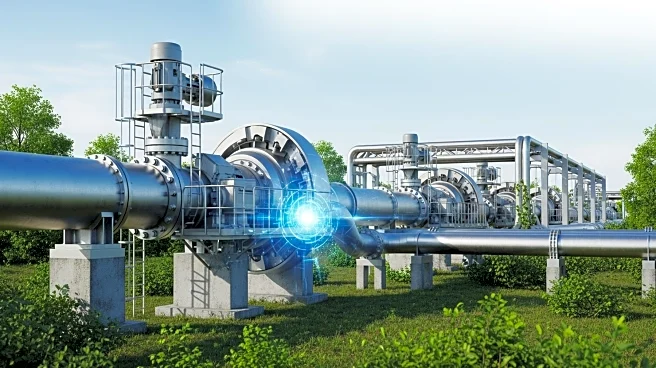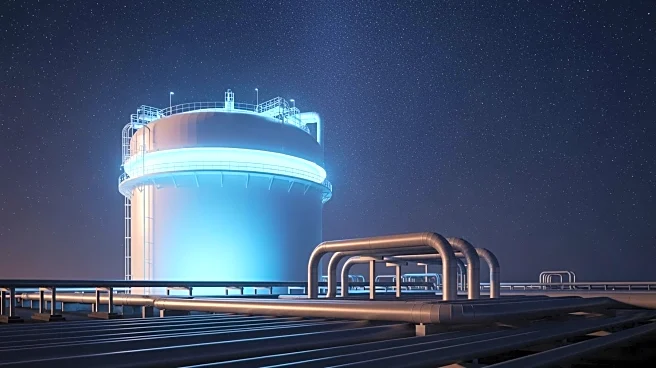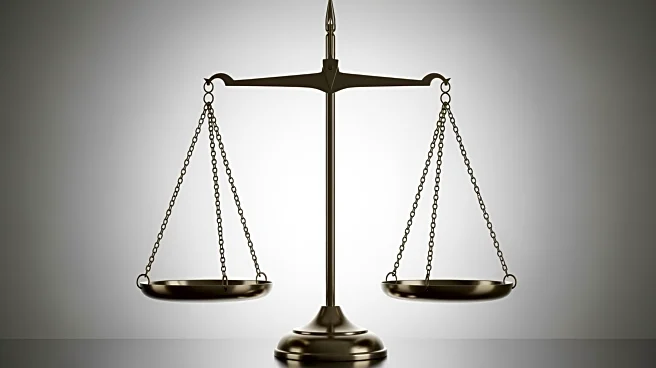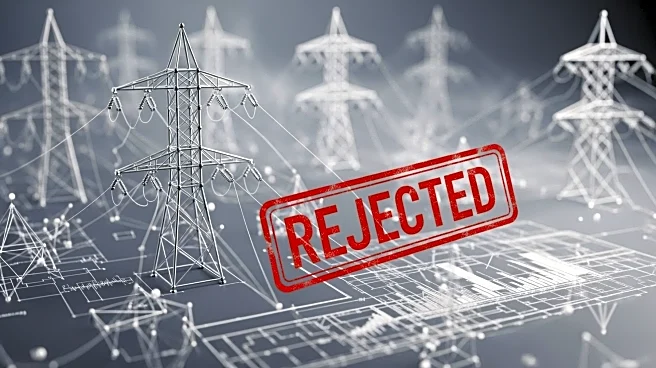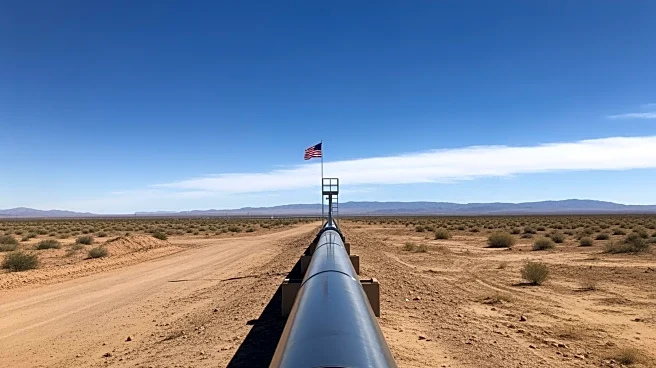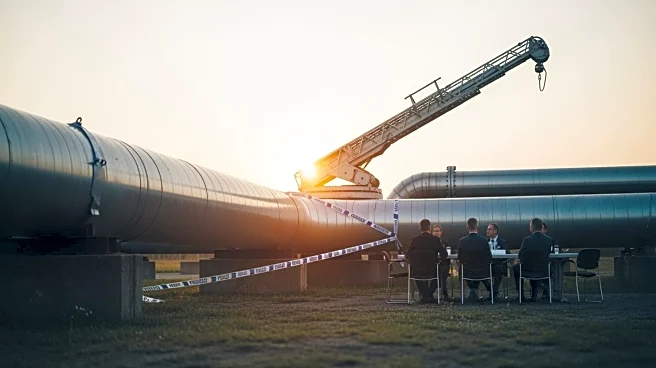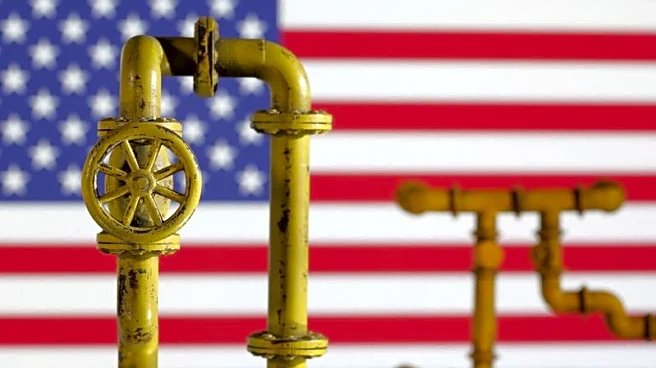What's Happening?
The CP2 LNG export terminal project, developed by Venture Global LNG Inc., will continue its development despite ongoing litigation. The U.S. Court of Appeals for the DC Circuit denied a request from national
and Louisiana-based environmental groups to temporarily block the Federal Energy Regulatory Commission's (FERC) approval of the project. The court stated that the petitioners did not meet the stringent requirements necessary for a stay pending court review. The project involves constructing a liquefied natural gas export terminal in Cameron Parish, Louisiana, with a capacity to handle 20 million metric tons per year, along with a new natural gas pipeline and related facilities.
Why It's Important?
The decision to allow the CP2 LNG project to proceed is significant for the energy sector, particularly in the context of U.S. natural gas exports. The project is expected to enhance the country's capacity to export liquefied natural gas, potentially boosting economic activity in the region and contributing to the U.S.'s position in the global energy market. However, it also raises concerns among environmental groups about the potential ecological impact and the precedent it sets for future energy projects. The ruling underscores the ongoing tension between economic development and environmental protection, highlighting the challenges in balancing these interests.
What's Next?
As the litigation continues, environmental groups may seek further legal avenues to challenge the project, potentially escalating the case to higher courts. Meanwhile, Venture Global LNG Inc. is likely to proceed with construction plans, aiming to meet projected operational timelines. Stakeholders, including local communities, policymakers, and industry leaders, will be closely monitoring the project's progress and any further legal developments. The outcome of this case could influence future regulatory decisions and environmental policies related to energy infrastructure projects.
Beyond the Headlines
The CP2 LNG project highlights broader issues related to energy policy and environmental regulation in the U.S. The case may prompt discussions on the adequacy of current regulatory frameworks in addressing environmental concerns associated with large-scale energy projects. It also raises questions about the role of judicial oversight in balancing economic interests with environmental protection, potentially influencing future legislative and regulatory approaches.
